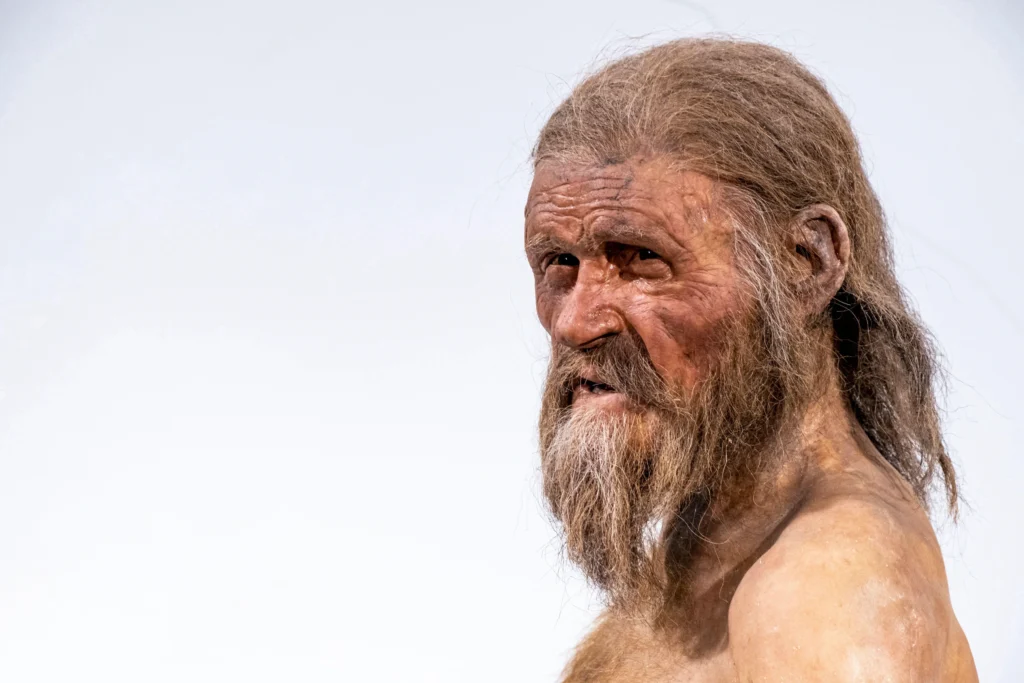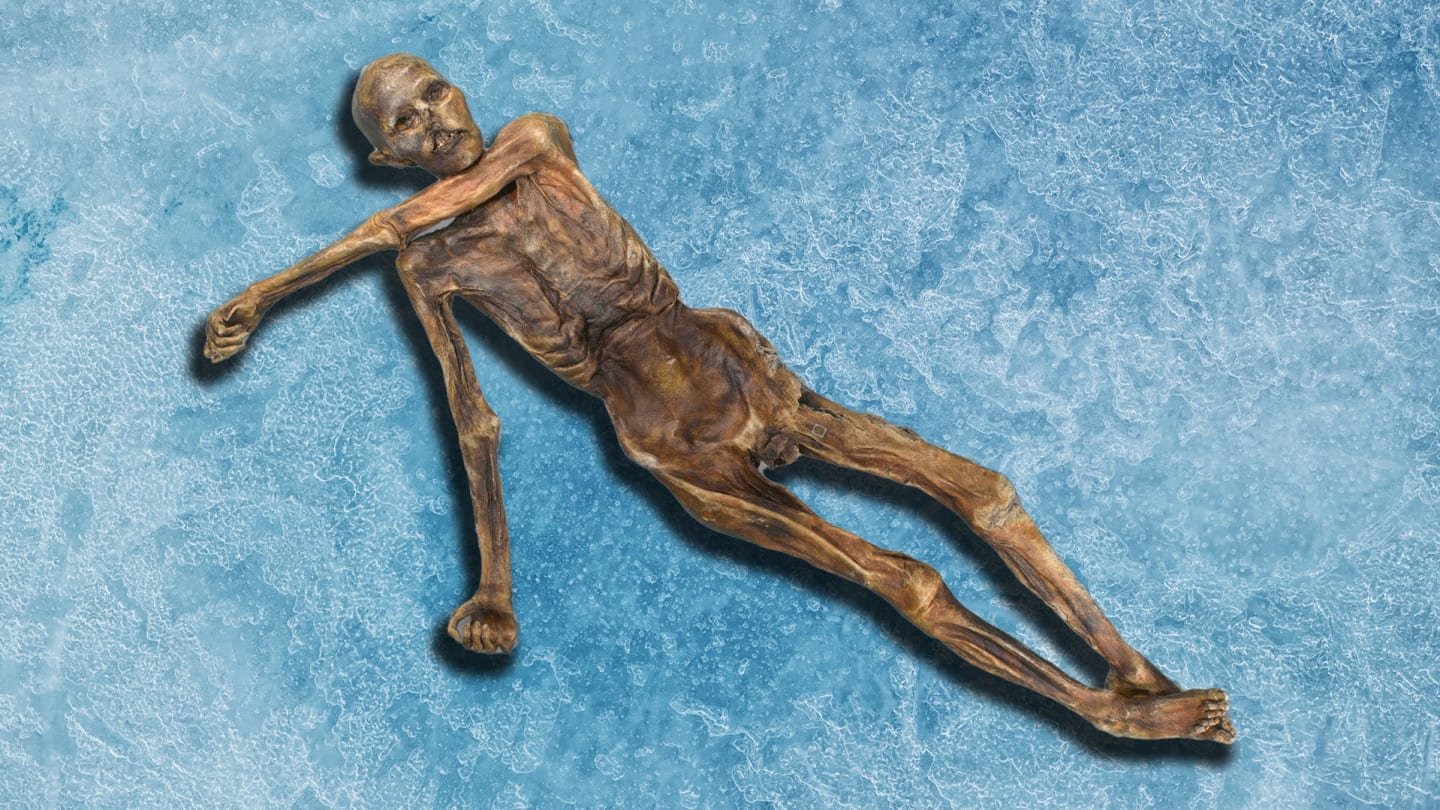Ötzi the Iceman’s DNA Reveals Surprising Ancestry
Ötzi the Iceman’s DNA Reveals Surprising Ancestry. In 2012, scientists analyzed the DNA of Ötzi, the famous frozen mummy discovered in the Tyrolean Alps. Their findings initially suggested that Ötzi’s ancestors came from the Caspian steppe.
Ötzi lived around 5,300 years ago, while people with steppe ancestry didn’t appear in central Europe’s genetic records until about 4,900 years ago. This confusion raised questions about Ötzi’s ancestry.

Archaeogeneticist Johannes Krause and his team from the Max Planck Institute for Evolutionary Anthropology in Germany decided to re-examine Ötzi’s genetic code. They found that the previous analysis was contaminated with modern DNA, and upon reevaluation, the steppe ancestry was no longer present.
Interestingly, Ötzi’s genetic makeup is mostly linked to Neolithic farmers, accounting for about 90% of his heritage. This is a higher percentage compared to other remains from the Copper Age.
Read more about Science and Technology at TabloidPK
Moreover, the new genetic analysis revealed surprising details about Ötzi. He had male-pattern baldness, which is quite unexpected for his era. Additionally, his skin was darker than previously believed based on artistic depictions. Light skin genes only became common 4,000 to 3,000 years ago.
This discovery challenges the idea that Europeans became light-skinned relatively quickly. In reality, the transition to lighter skin tones took thousands of years. It’s now evident that people in Europe, from 40,000 to 8,000 years ago, had skin as dark as those in Africa, which aligns with our human origins.
Read the full report of Ötzi the Iceman’s DNA reveals new ancestry and other surprises
Share this content:




Post Comment